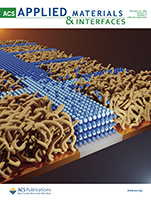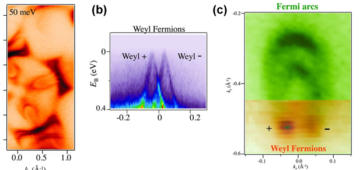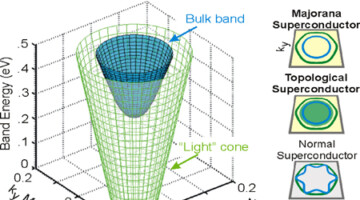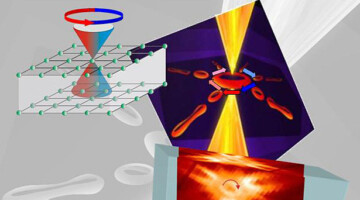A new center, called CHiPPS—or the Center for High Precision Patterning Science—led by Berkeley Lab microelectronics expert Ricardo Ruiz, could accelerate the next revolution in microchips, the tiny silicon components used in everything from smartphones to smart speakers, life-saving medical devices, and electric cars. Read more »
Pushing the Boundaries of Moore’s Law: How Can Extreme UV Light Produce Tiny Microchips?
For the past 25 years, scientists and engineers from the Center for X-Ray Optics (CXRO) have worked to develop EUV lithography, a technique that enables microchip circuits and transistors that are tens of thousands of times thinner than a strand of human hair. Patrick Naulleau, a CXRO scientist who helped develop EUV lithography, shares his perspective in this Q&A. Read more »
Additive Lithography–Organic Monolayer Patterning Coupled with an Area-Selective Deposition
This scene depicts the layer-by-layer growth of an inorganic film in a selected area. The alternation of a chemical agent (blue) deposits on a gray substrate to form an inorganic film. A cross-linked organic material (tan) locally inhibits this reaction and prevents film deposition. Furthermore, the pattern-wise cross-linking of this organic film enables nanoscale pattern generation. Read more »
Altered States in Graphene Heterostructures
ARPES directly reveals for the first time how electronic states are altered when epitaxial graphene is deposited on a substrate of hexagonal boron nitride (h-BN). The interaction between the materials in this heterostructure greatly improves its suitability for advanced, ultralow-power device applications. Read more »![]()
![]()
Weyl Fermions Discovered After 85 Years
Weyl fermions, elusive massless particles first theorized 85 years ago, have now been detected as emergent quasiparticles in synthetic crystals of the semimetal TaAs. The discovery could allow for the nearly free and efficient flow of electricity, as well as the realization of many fascinating topological quantum phenomena.
Superconducting Topological Insulators
ARPES studies show that it’s possible to introduce superconductivity into a topological insulator. The resulting novel properties, such as relativistic electrons and quantum memory, may in the future provide the basis for a whole new type of computer.
Read more »![]()
![]()
ALS Reveals New State of Matter
ALS user groups from Princeton and Stanford have been making waves this past year with several high-profile papers and extensive news coverage of their work on a new state of matter embodied by so-called “topological insulators,” materials that conduct electricity only on their surfaces. Read more »![]()
![]()
Observation of a Macroscopically Quantum-Entangled Insulator
It has recently been proposed that insulators with large band gaps and strong spin-orbit coupling can host a new phase of quantum matter called a topological insulator that is characterized by entangled wavefunctions. The proposal has now been realized by an international collaboration led by researchers from Princeton University who studied the electronic structure of insulating alloys of bismuth and antimony by means of angle-resolved photoemission spectroscopy (ARPES) and spin-resolved ARPES. Read more »![]()
![]()







